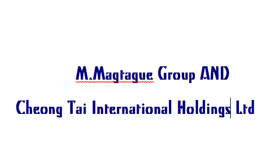J Rehabil Med. 2008 Feb;40(2):126-31.
Quality of life of traumatic spinal cord injured patients in Hong Kong.
Hu Y, Mak JN, Wong YW, Leong JC, Luk KD.
Source
Department of Orthopaedics and Traumatology, The University of Hong Kong, Pokfulam.
Abstract
OBJECTIVE:
To assess the health-related quality of life of patients with traumatic spinal cord injury living in Hong Kong.
DESIGN:
A cross-sectional retrospective study.
SUBJECTS:
Subjects with paraplegia following traumatic spinal cord injury were recruited from our department, which is one of the 3 main regional spinal cord injury rehabilitation centres in Hong Kong. A total of 120 potential participants were invited to join the study. The final study group comprised 58 patients (25 (43%) men and 33 (57%) women, 30 (50%) of whom were under 40 years of age).
METHODS:
Health-related quality of life was assessed using the Hong Kong Chinese version of the World Health Organization Quality of Life Measure Abbreviated version (WHO-QOL-BREF(HK)). Results were summarized and compared with previous results from healthy and other disease populations in Hong Kong.
RESULTS:
There was no significant difference in quality of life between men and women, or between different durations of spinal cord injury, different educational levels or different marital status (p > 0.05). However, a significant difference in quality of life was found in different age groups and between people with incomplete and complete paraplegia (p < 0.05). Compared with healthy and other disease populations, people with paraplegia had the lowest quality of life in Hong Kong (p < 0.001).
CONCLUSION:
People with paraplegia in Hong Kong have a lower quality of life than the general Hong Kong population. More community support is required to meet the needs of these patients in the areas of transportation, medical care and social life, in particular.
Is a cure really possible?
Wise Young, Ph.D., M.D.
W. M. Keck Center for Collaborative Neuroscience
Rutgers University, Piscataway, NJ
This question has been on the minds of many carecure members, particularly since a group of CareCure advocates are heading down to Washington on April 12 to ask for more spinal cord injury clinical trial and research funding from the government. While I have tried to answer this question many times, a significant proportion of people (20% or more, judging from various polls posted on the site) don’t believe that a “cure” will occur in our lifetime. Instead of trying to answer from the perspective of a scientist who is viewing research results, let me try to address the doubts and reasons for pessimism expressed by many.
Reasons for pessimism concerning a cure for spinal cord injury fall into four categories. The first is that it is not possible to revive what has been dead and absent for many years, including neurons, muscles, bone, and other organs, especially with aging. The second is that the spinal cord cannot regenerate, i.e. reconnect. Scientists have never been able to do so in humans and why should we believe that they can do so now? The third is that even if a cure were possible, the government and society will not invest sufficiently into making the cure a reality for people. The fourth is that many clinicians think that a cure is impossible, at least in our lifetime. Let me consider each of these reasons in turn.
• How is it possible to revive what has been dead and gone for year? First, there is a false assumption in this question, the assumption that everything is dead and gone. Even the most severely injured people have most of their spinal cord below the injury site remaining and still have some bone and muscle. Second, it is possible to revive and regrow muscle, bone, and even neurons. Third, it is not necessary to regrow and revive everything in order to have significant function. Of course, the more you keep your body and lower spinal cord alive and kicking, the less work and time it will take. Yes, recovery will be slower in older people and will require work. However, for people who have been injured, even for decades, exercise will restore muscles, bones, and other organs. There will probably be ways to hasten that restoration in the future, perhaps through use of stem cells to juvenate those tissues.
• Can the human spinal cord regenerate? There is ample evidence that animal spinal cords can regenerate. Not all the data comes from animals. Let me just give three examples that argue for the possibility of human regeneration. First, if you stick a peripheral nerve into the spinal cord of a human, spinal axons will enter into the peripheral nerve and grow all the way to innervate muscle. In other words, human axons will grow all the way given the right environment. A second example is the continued recovery of function in people many years after injury. Christopher Reeve’s recovery of sensation starting 2 years after his injury, the return of his left index finger movement at 5 years, and his ability to move his legs in the swimming pool are well-publicized examples. I am sure that many people have similar stories of patches of sensation or movement returning many years after injury. A third example is the remarkable recovery of many people who have had severe incomplete spinal cord injury. That recovery often takes many years, similar to the timing that would be expected of regeneration. It is true that people with “complete” spinal cord injury will need therapies that will make them “incomplete” but that is why we need research and clinical trials.
• Government and society have not invested in research. It is indeed true and frustrating that our government and society have not invested adequately into spinal cord injury research and clinical trials. It has become very clear that they will not do so without significant public pressure. We cannot sit around and wait. It is not a matter of money but a matter of priority. Our government spends more on in one day in Iraq than they have spent on spinal cord injury research for the past 5 years. Our nation has placed its priority on other issues. This is something that can and must be changed. We also must make sure that when the cure comes, it is available to everybody and not just the wealthy and well-connected.
• Clinicians are pessimistic. It is true that many clinicians are pessimistic. However, there are also many optimistic clinicians, particularly ones who have taken the time and effort to learn about research and the new findings. We must remember that most clinicians trained decades ago when there was no hope and that it is difficult to see through the veil of tears surrounding spinal cord injury. Pessimism of clinicians is something that the spinal cord injury community can correct. After all, who knows more about the cure than members of CareCure? Who sees clinicians who take of spinal cord injury? Who else can change them?
Christopher Reeve once said to me that hope is the first step. Without hope, we have nothing. He said that if scientists had told him that a cure is not possible because of insurmountable scientific obstacles, he could accept it. However, if the obstacles to a cure are pessimism, politics, and money, he cannot tolerate it. These are things that can be changed.
Discovering the Power in Me
Discovering the Power in Me (DPM). DPM has been developed by the Pacific Institute in Seattle and has been specifically tailored to the needs of people who experience traumatic injury.
About the Program
The program is based around how we think and how our thoughts impact significantly in every facet of our lives. It demonstrates how we let habits, attitudes and beliefs stand in the way of releasing our inner potential. It also reveals how our beliefs and expectations about ourselves, families, and our futures are directly related to our current realities.
DPM is designed to build awareness of how our mind works, and how to control the way we think and how to achieve success in any part of our lives we desire. The program also shows how important it is for those that have suffered a traumatic injury in particular, as well as their families, friends and caregivers, to lock on to the power of the mind, and focus on a productive and contributive future.
Program Structure
The program consists of 12 units and is co presented by four people from Canada living with a spinal cord injury through a series of video presentations. The information in the videos unlocks a toolbox of skills and applications that unleash potential in new ways. The skills obtained from the units can be applied immediately, to help anyone reach their goals.
Program duration is generally two days and involves 10 to 15 participants. Each unit involves watching a video followed by a short discussion. Participants are then asked to write answers to a few reflective questions outlined in their video resource manual with the facilitators then directing a group discussion.
Who to contact
For more information about the program please contact:
via the Ben Kende Foundation www.benkende.com or email bkf@www.benkende.com
ANYONE can benefit from this program, not just people that have gone through a traumatic injury or situation and we strongly encourage you to join us. We want to share the DPM program with as many people as possible both in our medical establishments and indeed the community.





















